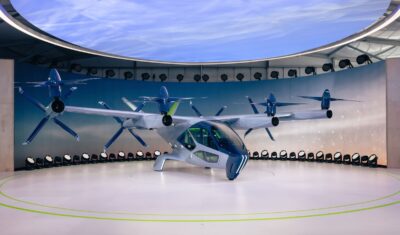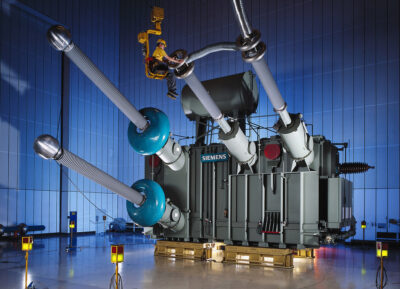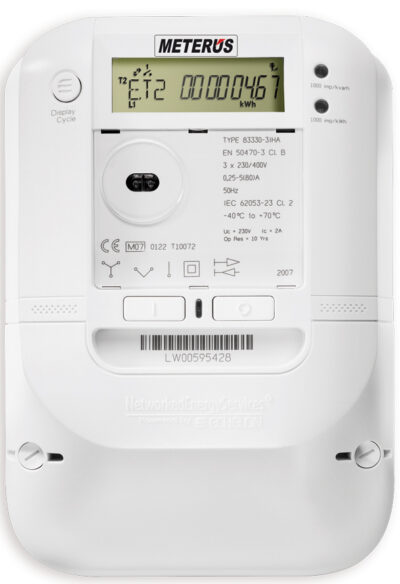The electric vertical takeoff and landing (eVTOL) aircraft industry is a rapidly maturing, multi-billion-dollar market on the cusp of revolutionizing urban and regional transportation. From the bustling skies of megacities to delivering critical supplies to remote areas, eVTOLs promise a quieter, cleaner, and more efficient way to move people and goods. As of late 2025, the industry is transitioning from a phase of conceptual development and prototype testing to one of commercial implementation, driven by technological breakthroughs, significant investment, and the gradual but steady evolution of the regulatory landscape.
Market Sizing and Growth Trajectory
The global eVTOL market is experiencing explosive growth, with analysts projecting a compound annual growth rate (CAGR) that could exceed 20% in the coming years. While market size estimates vary, most reports agree on a trajectory of rapid expansion. For instance, some forecasts place the market size at over USD 1.9 billion in 2025, with projections of it reaching over USD 3.4 billion by 2030 and potentially soaring to USD 37 billion by 2033 [1, 2].
This growth is fueled by several key drivers:
- Urban Congestion: A global surge in urban populations has intensified traffic gridlock, creating a critical need for alternative, efficient transportation methods [3].
- Demand for Sustainable Transportation: With growing concerns about climate change, eVTOLs offer a zero-direct-emission alternative to traditional aviation and ground transport, aligning with global sustainability goals [1].
- Technological Advancements: Significant progress in battery energy density, electric propulsion, and autonomous flight systems is making eVTOLs commercially viable [4].
- Strategic Investments: A shift from early-stage venture capital to strategic corporate investments from aerospace, automotive, and airline giants signals a growing confidence in the industry’s future [1].
Key Players and Competitive Landscape
The eVTOL market is a dynamic arena with a mix of established aerospace companies and nimble startups. North America, with a market share of approximately 38% in 2024, leads the industry, followed by Europe and a fast-growing Asia-Pacific region [2, 5].
The competitive landscape is defined by several key players:
- Joby Aviation (USA): Often considered a leader in the U.S. urban air mobility (UAM) sector, Joby has a long history of testing and has secured strategic partnerships with major players like Toyota and Delta Air Lines [1, 5]. The company is actively working with the FAA for passenger transport approvals and aims to begin commercial operations in limited markets by late 2025 [1].
- Archer Aviation (USA): A major competitor to Joby, Archer is focused on developing its four-passenger Midnight aircraft for short-haul flights. The company has a partnership with United Airlines and plans to ramp up production in its Georgia factory in 2025 [1, 5].
- Lilium GmbH (Germany): Based in Europe, Lilium is developing a premium eVTOL jet for regional air mobility, aiming to connect cities over longer distances. The company’s unique ducted fan technology is designed for quiet operation [4, 5].
- EHang (China): EHang stands out for its focus on autonomous air mobility and has already conducted regular eVTOL flights in Chinese cities, providing invaluable real-world data and a significant operational head start [2, 5].
- Beta Technologies (USA): While many players target passenger transport, Beta has carved a niche in cargo, military, and regional air mobility.16 It is also building a crucial charging network infrastructure for electric aircraft [1, 5].
Other notable players include Vertical Aerospace, Volocopter, and Eve Air Mobility, all of which are making significant strides in their respective markets and are backed by strong partnerships [5].
Technology and Innovation: The Engines of Change
At the heart of the eVTOL revolution are a range of technological advancements:
- Propulsion Systems: While most eVTOLs are fully electric, some designs are exploring hybrid-electric or hydrogen fuel cell options to extend range [4, 6]. Different lift technologies, such as vectored thrust (e.g., Joby, Archer) and lift-plus-cruise (e.g., Beta ALIA), are being developed and tested to optimize for different use cases and efficiencies [4].
- Battery Technology: The limitations of current lithium-ion batteries—specifically, their energy density, weight, and charging time—remain a key challenge. However, improvements are constant, with projections for higher energy density batteries in the coming years [1, 4].
- Autonomy and AI: While initial commercial operations will likely be piloted, the long-term vision of UAM hinges on autonomy. AI and machine learning are being integrated for precise navigation, obstacle avoidance, and enhanced safety, paving the way for eventual uncrewed flight [6].
Regulatory and Infrastructural Hurdles
The path to widespread commercial deployment is not without its challenges, primarily in the areas of regulation and infrastructure.
- Certification: Aviation authorities like the Federal Aviation Administration (FAA) in the U.S. and the European Union Aviation Safety Agency (EASA) are developing new certification frameworks for these novel aircraft. This process is complex, resource-intensive, and a primary determinant of a company’s go-to-market timeline [1, 7].
- Airspace Integration: Safely integrating a new class of aircraft into crowded urban airspaces requires advanced air traffic management (ATM) systems. The industry is working on solutions like Unmanned Aircraft System Traffic Management (UTM) to manage low-altitude traffic [7].
- Infrastructure: The success of UAM depends on the development of “vertiports”—designated landing and takeoff facilities, often integrated with existing transportation hubs [7]. This requires significant investment and collaboration between public and private sectors [1].
- Public Acceptance: Addressing public concerns around noise, safety, and privacy is crucial for social acceptance. While eVTOLs are significantly quieter than helicopters, their acoustic footprint in dense urban environments is still a subject of ongoing research and public debate [7].
The Future is Taking Off
The eVTOL industry is at a pivotal moment. With first commercial passenger operations expected in limited markets by late 2025, and a growing number of companies securing partnerships and certifications, the vision of flying taxis and aerial logistics is becoming a reality [1]. While hurdles remain in regulation, technology, and infrastructure, the momentum is undeniable. The industry’s potential to alleviate urban congestion, reduce emissions, and create a new layer of mobility makes it one of the most exciting and transformative sectors of the 21st century.
Citations:
[1] Flying Cars Market. (2025). “Evolution of eVTOLs and electric aircraft in 2025: A comprehensive analysis.”
[2] IMARC Group. (2025). “eVTOL Aircraft Market Size, Trends and Forecast to 2033.”
[3] Tata Elxsi. (2025). “Urban Air Mobility – Navigating the Path to the Future.”
[4] EEPower. (2025). “eVTOL Technology Trends To Watch in 2025.”
[5] IMIR Market Research Pvt. Ltd. (2025). “Leading Companies in Global eVTOL Aircraft Market 2025.”
[6] SkyQuest Technology. (2025). “Evtol Aircraft Market Size, Trends & Forecast to 2032.”
[7] To70. (2025). “eVTOL Revolution: Soaring potential, grounded challenges.”



